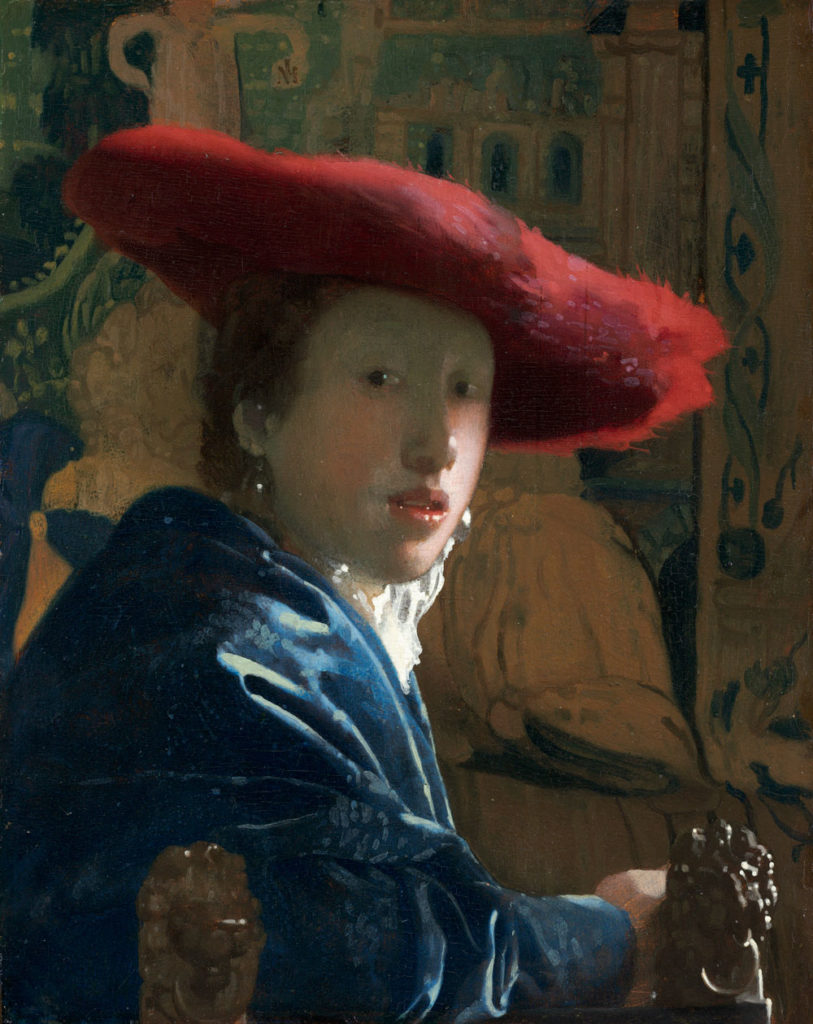1. “All Beneath the Moon Decays” at Daniel Faria Gallery, Toronto
Good exhibitions are, more often than not, well-timed exhibitions. This differs from good art, which should transcend its time period and search for a broader vantage point. But an exhibition doesn’t need to be timeless; instead, it must issue something missing and necessary. This year, one such exhibition was “All Beneath the Moon Decays” at Daniel Faria Gallery, which proffered ruins in place of perfection.
After countless shows filled with large-scale, monochromatic painting and sleek riffs on minimalism, finding Paul Kajander’s intimately sized and thoughtfully rendered All That Was Solid (For Greece) was immediately rewarding. Taking pages from John Boardman’s three-volume history of Greek sculpture, Kajander painted over the book’s illustrations, creating amorphous, fragmented bodies. Something vaguely reminiscent of Geoffrey Farmer landed in the outcome, but Kajander’s dedication to the book’s original format steered the project away from installation, and beyond the territory of mimicry.
2. One thousand One hundred & eighty One by Rebecca Belmore in conjunction with “KWE” at the Justina M. Barnicke Gallery, Toronto
I argued that good art needs to be timeless, but it can also be timely, or both. Usually both. Rebecca Belmore’s performance One thousand One hundred & eighty One (2014), held in concert with her solo exhibition “KWE,” made statistics released in the latest RCMP report detailing murdered and missing Indigenous women palpable and painful. Using the report’s figures as her subject, she mounted a clarion call for attention and justice.
As a performance artist, Belmore possesses an unremitting control over her audience, a surprising feat given the largely improvisational, unscripted nature of her work. Throughout One thousand One hundred & eighty One, her approach was measured, her demeanour implacable.
Over the course of the day, she hammered 1,181 nails into a tree stump, each nail representing one of the murdered and missing Indigenous women. Dressed in a construction vest, she worked methodically in front of the Hart House building, hammering slowly and consistently. The piece began to crescendo in the early evening: after placing the final nail, Belmore began to shout out, in an agonized but clear voice, the number. She repeated it over and over, until it began to take on some of the weight it deserves.
With her audience largely in tears, the effect was elegiac, but defiant.
3. Johannes Vermeer in the permanent collection at the National Gallery of Art, Washington, DC
This choice might be slightly unfair, but picking favourites doesn’t lend itself to egalitarianism. Vermeer has already made it onto the all-important art-historical list—the canon—and I hardly need to convince anyone of his merits. So, rather than waxing poetic about his confounding work, I will offer a quick suggestion: to better understand contemporary photography, look at some paintings by Vermeer. Honestly.
The Dutchman’s relevance becomes most obvious in his small tronie Girl with the Red Hat (1665–66). We can ignore debates about the subject’s identity for our purposes; look, instead, at the chair’s lion-head carvings, and the variable, shifting focus Vermeer casts across them. Look at the tapestry behind the sitter, which, far from providing a background, seems to emerge and disappear.
Now turn to the blurring fields in the photographs of Rachel Granofsky or Daniel Gordon, where trompe-l’œil painting and carefully posed objects confuse the foreground and the background, leaving viewers unsteadied and off-balance. It’s the same effect. Could these photographers signal a return to the decorative, or a renewed interest in ornamentation’s potential? I can’t say for certain, but it’s enough to end my year on a high.
Caoimhe Morgan-Feir is interim online editor at Canadian Art.

 Johannes Vermeer, Girl with the Red Hat, c. 1665–66. Andrew W. Mellon Collection, National Gallery of Art, Washington, DC.
Johannes Vermeer, Girl with the Red Hat, c. 1665–66. Andrew W. Mellon Collection, National Gallery of Art, Washington, DC.







